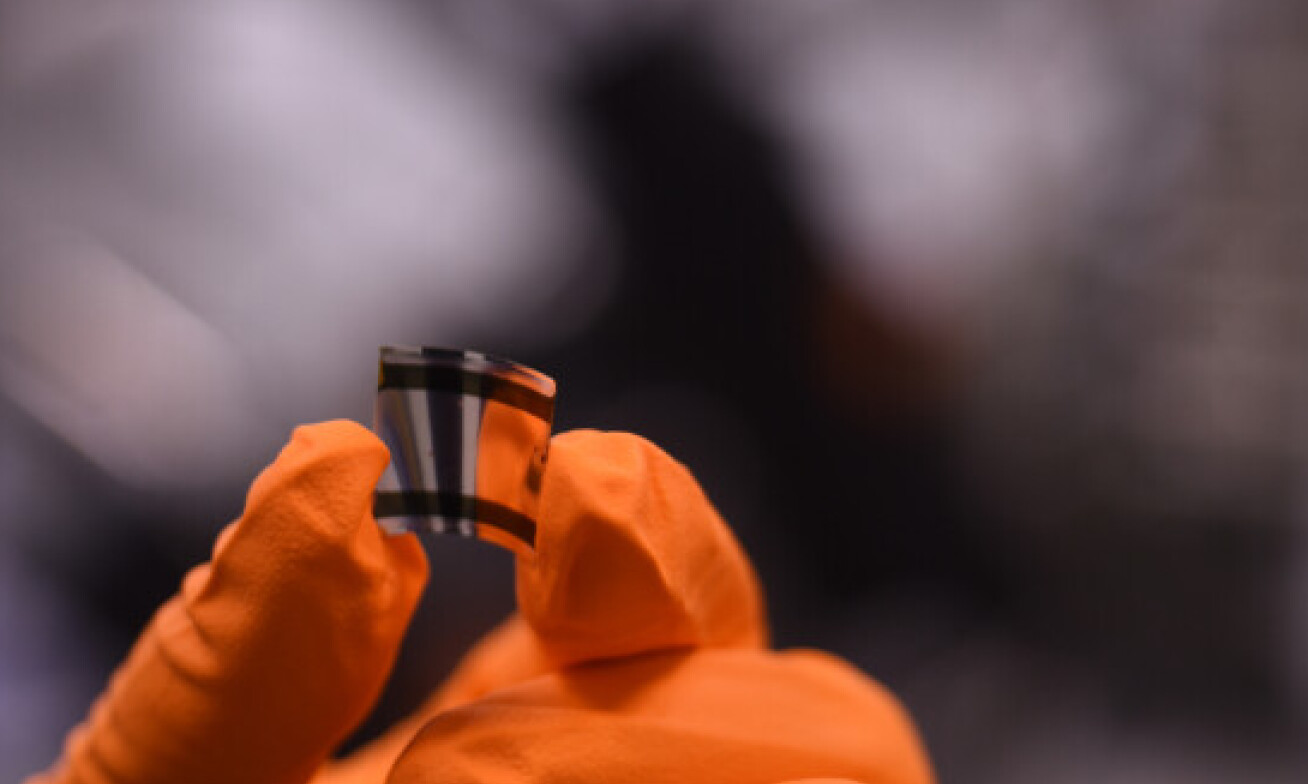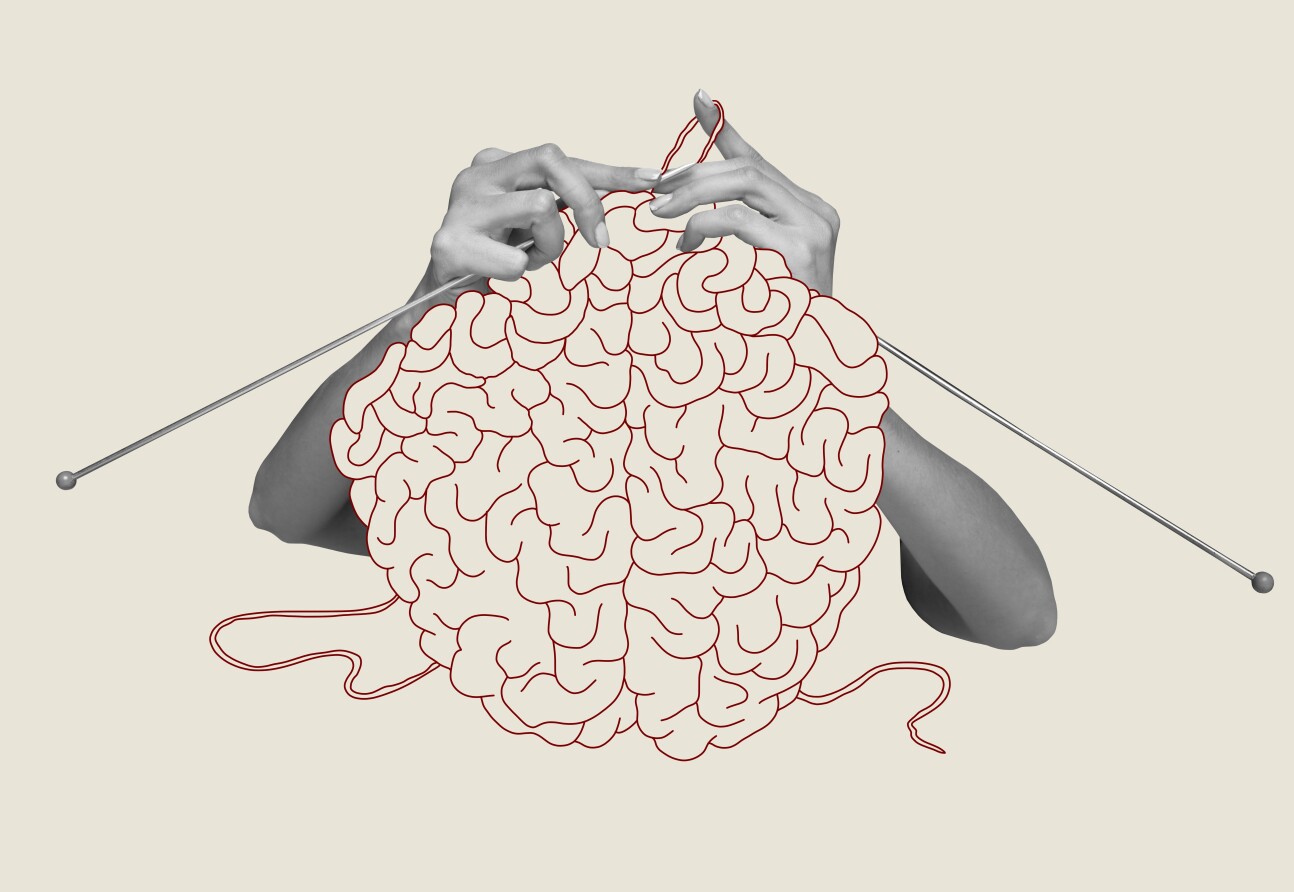Bendy X-rays and DMT infusions: News from Imperial
Here’s a batch of fresh news and announcements from across Imperial.
From bendy X-rays that could one day improve airport scans and cancer detection, to a psychedelic substance that could treat mental health disorders, here is some quick-read news from across Imperial.
Bendy X-ray detectors

New materials developed at the University of Surrey involving Imperial College London researchers could pave the way for a new generation of flexible X-ray detectors, with potential applications ranging from cancer treatment to better airport scanners.
Traditionally, X-ray detectors are made of heavy, rigid materials such as silicon or germanium. This can lead to screening errors when scanning patients and radiotherapy being administered to the healthy tissue around a tumour.
Substances built up of hydrogen and carbon, known as organic semiconductors, offer a more flexible solution, but until now, did not allow as detailed an X-ray image to be produced as traditional detectors.
The team created an ink by adding low quantities of high atomic number elements to an organic semiconductor. Building on their previous research in this field, their new detector behaves more like human tissue under X-rays, which could lead to new, safer techniques for administering radiotherapy, mammography and radiography.
Co-author, Professor Martin Heeney, from the Department of Chemistry at Imperial, said: “We have been developing heavy analogues of traditional organic semiconductors for some time, and we were intrigued when Dr Imalka Jayawardena at Surrey suggested their application in X-ray detectors. These results are very exciting, especially considering this was the first material investigated, and there is plenty of scope for further improvements.”
Read the full paper in the journal Advanced Science.
Cancer vitamin link
 Researchers trying to untangle how breast cancers develop have found that tumours rely heavily on a key vitamin to grow and survive.
Researchers trying to untangle how breast cancers develop have found that tumours rely heavily on a key vitamin to grow and survive.
Through a combination of mice studies and human tumour cell analysis, a team led by the Francis Crick Institute focused on a major cancer-driving gene called Myc – which is overexpressed in many human cancers.
They found that vitamin B5 was associated with areas of high Myc expression in human and mouse tumours. What’s more, restricting vitamin B5 led to tumours growing more slowly. The researchers believe this effect is due to the key role vitamin B5 plays in the cells’ metabolism.
Dr Paolo Inglese, of the Institute of Clinical Sciences at Imperial, explained that tumour metabolism is a ‘vulnerability’ which could potentially be a target for treatment.
He said: “A series of experiments – using both conventional and novel techniques – has established the availability of vitamins and cofactors as a potential bottleneck in tumour progression, which could, one day, be exploited therapeutically.”
Read the full paper, published in Nature Metabolism.
Continuous DMT infusion
 Scientists from Imperial’s Centre for Psychedelic Research have tested a new way to extend the hallucinogenic experience produced by Dimethyltryptamine (DMT). DMT is a psychedelic substance found in plants and animals which produces a visual and auditory psychedelic experience. The compound has been used previously in studies of human consciousness and could be potentially investigated in studies to observe its effectiveness in treating mental health disorders.
Scientists from Imperial’s Centre for Psychedelic Research have tested a new way to extend the hallucinogenic experience produced by Dimethyltryptamine (DMT). DMT is a psychedelic substance found in plants and animals which produces a visual and auditory psychedelic experience. The compound has been used previously in studies of human consciousness and could be potentially investigated in studies to observe its effectiveness in treating mental health disorders.
In this study, scientists used a new method of injecting patients with DMT over 30 minutes in 11 healthy volunteers. The findings show that while the psychedelic effects of DMT were maintained in the volunteers over this time, anxiety remained low, providing evidence that using this extended administration of DMT is safe and well tolerated.
Lisa Luan, co-author of the study and PhD researcher at the Centre for Psychedelic Research said: “Our study has demonstrated that DMT provides a psychedelic experience that can easily be modified in terms of strength and duration. This flexibility may be beneficial to clinical work, where different individuals may have differing needs.”
Senior author and Head of the DMT Research Group, Dr Chris Timmermann said: “These findings indicate that extended administrations of DMT can be used as an elastic probe into human consciousness as well as for the treatment of mental health disorders. By flexibly and safely adapting the administration of DMT we may be able to personalise psychedelic treatments according to the specific characteristics and needs of individuals.”
Read the full research in the Journal of Psychopharmacology.
Pioneer Award

Dr Jose Jimenez, from the Department of Life Sciences, has won a BBSRC Pioneer Award. These are given to researchers exploring early-stage ideas at the frontiers of bioscience, to make exciting discoveries with the potential to transform our understanding of the rules of life.
Dr Jimenez’s project ‘A three-dimensional view of the central dogma of molecular biology’ will investigate how the physical location of genes inside a cell plays a role at controlling their expression and whether this distribution is shaped by evolution.
He said: “Envisioning cells as heterogeneous volumes in which the physical location of genes and their expression machinery plays a role at tuning the cells’ ability to survive is a very exciting prospect. This work will help understand how evolution shapes the internal architecture of the cell and think about space as a design constraint for more efficient biotechnological applications.”
Smart helmet
 A paper authored by Imperial scientists has been awarded the 2023 IEEE Engineering in Medicine and Biology Society Prize Paper Award.
A paper authored by Imperial scientists has been awarded the 2023 IEEE Engineering in Medicine and Biology Society Prize Paper Award.
The IEEE Engineering and Biology Society (EMBS) has several journals under its remit, and the paper by the team was published in the IEEE Journal of Translational Engineering in Health and Medicine, in 2016.
The paper outlines a "Smart Helmet" which can record neural function and vital signs at multiple points of the head during activities like cycling, motorcycling, horse riding, patient monitoring and military engagement.
The supervisor, Professor Danilo Mandic of Imperial’s Department of Electrical and Electronic Engineering, said: “This further promotes our own brand of creative thinking and problem solving. I would like to congratulate our creative and hard-working research students, without whom this achievement would have been impossible.”
The paper ‘Smart Helmet: Wearable Multichannel ECG and EEG’ was authored by PhD graduates in Electrical and Electronic Engineering Wilhelm von Rosenberg, Theerasak Chanwimalueang, Valentin Goverdovsky and David Looney, under the supervision of Professor David Sharp from the Department of Brain Sciences and Professor Danilo P. Mandic from the Department of Electrical and Electronic Engineering.
Image credit unless otherwise stated: Shutterstock

Want to be kept up to date on news at Imperial? Sign up for our free quick-read daily e-newsletter, Imperial Today.?
Article text (excluding photos or graphics) © Imperial College London.
Photos and graphics subject to third party copyright used with permission or © Imperial College London.